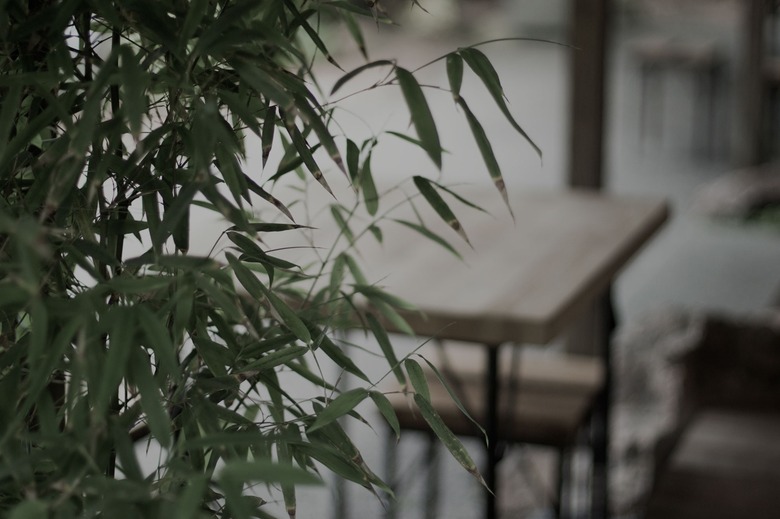How To Treat Raw Bamboo For Making Furniture
It's difficult to find a more sustainable and durable building material than bamboo. It has been the go-to material for large and small construction projects in Asia for centuries. Moso bamboo (Phyllostachys edulis) is the most popular lumber species. It thrives in temperate climates —as far north as USDA zone 6—and once established, it grows several feet per day to produce a building material with a hardness comparable to oak. You can grow your own moso bamboo—as well as many other species—in many parts of North America, but it's important to treat it before using it, or it will get quickly damaged by pests and rot. Many bamboo producers treat furniture-grade bamboo by soaking it in a boron solution.
Mixing a Treatment Solution
Mixing a Treatment Solution
A typical boron solution consists of two easy-to-find chemicals: borax and boric acid. Borax is available in most supermarkets in the laundry section. Bamboo producers sometimes substitute borax with a boron-based fertilizer. Boric acid is slightly more toxic than borax, though not dangerously so; and because it's often used for pest control, it's available at drug stores. While producers use a variety of formulae, the general idea is to create an approximate 10 percent boron solution. Here's a simple mixing procedure using borax and boric acid:
1. Heat Water
Heat four liters (1 U.S. gallon) of water. Borax and boric acid dissolve faster in hot water than they do in cold.
2. Add Borax and Boric Acid
Add 3.75 cups of borax and 2.5 cups of boric acid to the water. Stir until the powders are dissolved.
3. Add Cold Water
Top off the solution with enough cold water to bring the volume to 10 liters (2.5 gallons).
Tip
If you need more solution, simply increase the proportions of borax and boric acid in at a ratio of 1.5 to 1 cup per gallon of water.
Soaking the Bamboo
Soaking the Bamboo
The bamboo should remain in the borax/boric acid solution for about a week, but freshly harvested bamboo doesn't have to be completely immersed. If it has been less than about four hours since the bamboo was cut, you can stand it in a bucket of solution, and the bamboo will suck the solution into its fibers. Otherwise, you need to soak the entire stalk in a trough long enough to contain it.
The soaking time depends on the size of the stalks. Small stalks suitable for furniture need to remain in solution for about one week. Larger stalks should remain about two weeks. If you stand the bamboo in a bucket or drum, you'll probably need to top off the boron solution as the stalks soak it up.
After soaking, remove the bamboo and stand it upright leaning against a building or fence in a sheltered location to allow the water will to drain to the bottom of the stalks and into the ground. Neither borax nor boric acid are toxic enough to harm the soil. You can also catch the drainage in a pan and reuse it. Drying time depends on humidity and sun exposure and is, on average, from two days to one week.
Other Treatment Methods
Other Treatment Methods
Bamboo producers sometimes treat raw stalks with a 1:10 copper sulfate solution, especially when using the bucket infusion method. To achieve this ratio, you add 100 grams of copper sulfate to one liter of water (0.88 pounds per gallon). You can stand the stalks in the solution or immerse them, and the treatment period is about the same.
Treating bamboo for use in outdoor construction projects is a bit more complex. The chemicals used, such as copper chrome arsenic (CCA), aren't recommended for household use and need to be applied under pressure to be effective. You can also coat the bamboo by spraying or brushing with creosote to render it suitable for ground contact.
